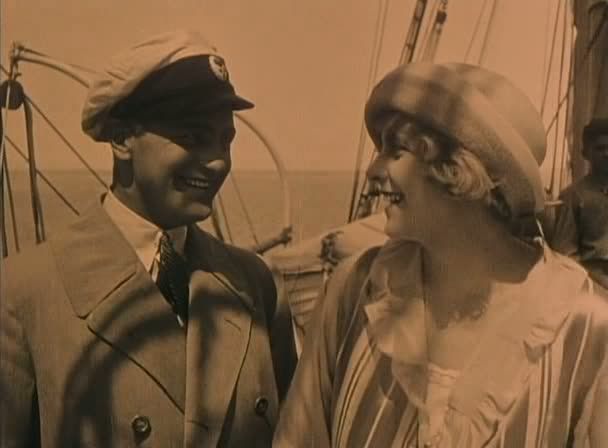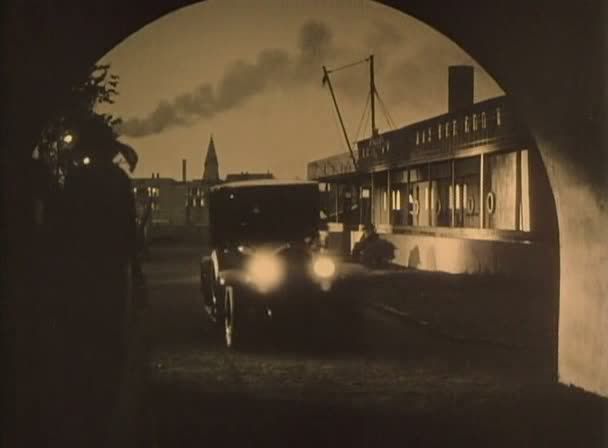
Though The Finances of the Grand Duke was F.W. Murnau's second straight literary adaptation in collaboration with screenwriter Thea von Harbou, it is a very different film from its moody, poetically melancholy predecessor, Phantom. It's a peculiar film for Murnau, a rapidly paced comic adventure that packs an epic serial's worth of action, disguises and revelations into a short, breezy comic thriller. The plot is chaotic and confused, obviously greatly condensed from Frank Heller's source novel, and most of its chapters begin with a lengthy title card introducing the new characters being added to a large and ever-growing cast of conspirators, counter-conspirators, dukes and princesses in disguise, financial speculators, revolutionaries and tricksters.
The plot concerns the impoverished and debt-plagued kingdom of Abacco and its cavalier Grand Duke (Harry Liedtke), who goes on the run with his financial minister Don Paqueno (Adolphe Engers) in order to avoid his debtors and possibly arrange a marriage to the far richer Princess Olga of Russia (Mady Christians). These royal plots are surrounded by a baffling array of shenanigans with various players trying to get control of Abacco or make money off the confusion that reigns in the struggling kingdom. The action is frantic, the film's humor arising mostly from the sheer overwhelming profusion of interlocking plots and strange occurrences, like one conspirator who's distracted at a key moment by a pair of animal impersonators. They're not the only characters in the film who engage in masquerade and disguise, as Olga is on the run from her notoriously cruel brother, falling in with the name-shifting Philipp Collins (Alfred Abel), a smirking spy, forger and con man who comically disguises her with drawn-on facial hair and sunglasses.
The film's madcap pace and slightly goofy pile-up of intrigues makes it very entertaining, but it's also a typically stylish film from Murnau, with his usual meticulous mise en scène. Murnau, together with cinematographer Karl Freund, shot much of the film in natural locations, with occasional expressionist two-dimensional sets mixed in, and the gorgeous seascapes, rocky vistas and Mediterranean locales add to the film's sense of globe-trotting adventure. There are numerous striking shots: images of sailing ships isolated in endless expanses of water, rocky coastlines with picturesque old ruins crumbling into the cliffs, underground grottoes where unscrupulous schemers discover mineral lodes and plan to exploit them.

There are also some very compelling, shadowy urban images that create a mood of late-night scheming and diplomatic espionage. When Collins meets Olga for the first time, rescuing the mysterious woman from her pursuers, Murnau cuts away several times to atmospheric images of the foggy, shadowy city. Fog rolls across the frame, obscuring the streetlights that cut through the darkness, as pedestrians stroll through the smoke across a bridge. The naturalistic cityscapes and sunny shorelines are contrasted against scattered moments of expressionist stylization, like a scene where Olga and Collins conspire against a backdrop of jagged, painted houses silhouetted on the set behind their car. In other scenes, cars cut through the night, speeding through the crowded city in a frantic chase, and a train sits waiting to depart, unleashing rolling clouds of steam before chugging slowly forward out of the station, nearly filling the frame with its black bulk.
At times, Murnau's imagery is playfully striking, as when a story about a "saucy little woman" is followed by a jaunty closeup of the woman in question, turning her head to smile at the camera, before her face fades into an image of the circus big top where she works. The film is fast and frenzied, packed with this kind of visual panache, making it a very pleasurable experience, uncharacteristic of Murnau in its story and tone but not in its style.

No comments:
Post a Comment